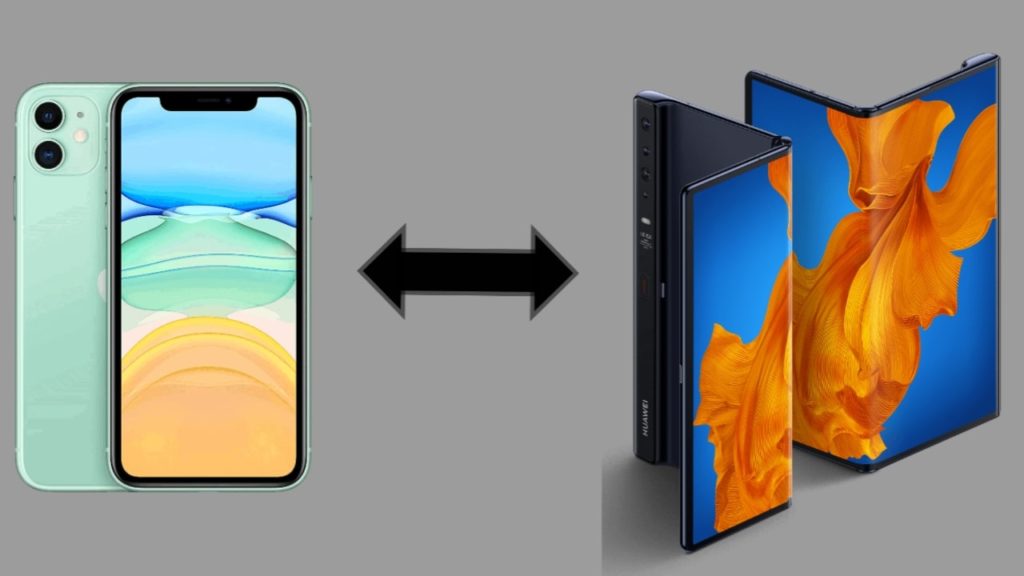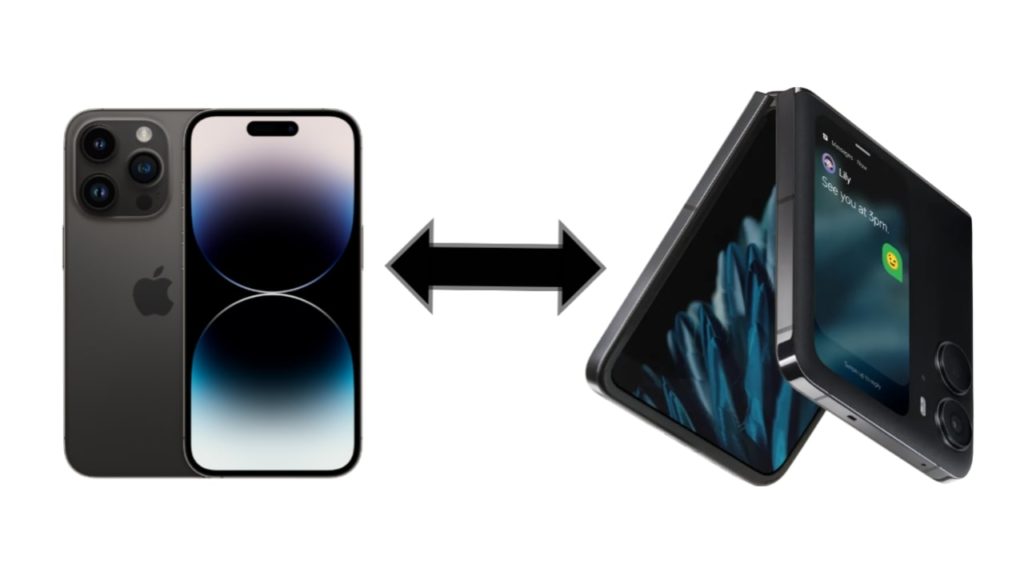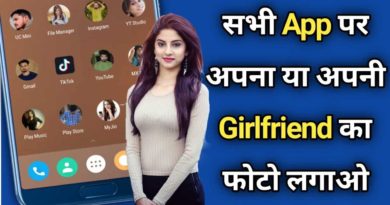From iPhone to foldable Android, an experience to be had
From iPhone to foldable Android, an experience to be had

I’ve been adopting iPhone as my primary phone for several years now, and while I’ve continued to try Android smartphones, both for reviews and for personal interest, I can say that I’ve gotten so used to iPhone and iOS that I’ve developed a muscle memory that allows you to use it very naturally.
This is probably the story of many people, as we know how difficult it is sometimes to leave one ecosystem and adopt another, partly out of habit and partly out of fear of change. But after so many years in the iPhone world, I decided to do an experiment, that is to go back to Android as the main smartphone but do it with a foldable, specifically with an Oppo Find N2 Flip.
Why change ecosystem
There doesn’t always have to be a rational reason for wanting to change. You can feel comfortable in the Apple universe, but at a certain point, you can get bored and consequently feel the desire to change. The reasons why I wanted to make this step are many and, in addition to the irrational desire to change, I’ve long wanted a bigger smartphone, but one that wasn’t bulky.
I wanted the ability to better customize the screens to have everything I need at a glance, without too much movement and without resorting to searching. And I wanted something new, that wasn’t a typical smartphone. Everyone has their reasons for wanting to change, but it certainly doesn’t hurt, paraphrasing a famous Churchill phrase “ To improve is to change; to be perfect is to change often ”, which we can translate as “ To improve we must change; to be perfect we have to change often ”.
The fears of change
iPhone and Android, despite the years of life, developments, and continuous updates, are not the same thing. The interaction model and the ergonomics of use are now similar, or at least we no longer find ourselves in a situation where one is objectively better – or worse than the other. There remain some differences that are more related to subjective pleasure rather than to behaviors that can be defined as “wrong”. So, having eliminated ergonomics from the list of potential problems, differences remain that for some could be fatal.
To cite a couple of examples, those who have an iPhone and a MacBook or iMac may find the “AirDrop” file exchange function indispensable, perfectly integrated within Apple devices, and which allows you to exchange photos and other files in an extremely simple way and efficiently. The Android world still lacks an official equivalent to AirDrop, and while some brands have made their own versions, it remains a very fragmented market.
Others may not be willing to do without CarPlay, perhaps because their car does not support Android Auto, or does not support it wirelessly. Even in this context, the market is extremely heterogeneous, which is why there are products like Carlinkit that try to put a patch where car manufacturers have made choices that are not acceptable.
And then there is the fear of “I lose all my photos” or “I have to re-download all the apps and log in again”, a well-founded fear determined by the bad method that people, still today, have in approaching technology, how they manage their passwords and misuse of the cloud.
So let’s see how the transition went and what advice I can give to anyone who wants to make this change.
Painless passage or almost
Today switching from iPhone to Android is less difficult than in the past. To make everything less manual, Google has taken care of it directly, providing an application that allows you to configure the new Android smartphone by automatically moving photos, contacts, calendars, messages, and even WhatsApp. I will not specify every single step in this article because we have already published an in-depth study on it, which you can find at this link: From iPhone to Oppo. The indicated procedure is also suitable for other Android smartphones.
If you don’t want to use this method, simply because you want to start from scratch, here are some tips.
As for contacts and calendars, the simplest advice is to switch to Google for both functions . Google also works on the iPhone, so before moving on, if you don’t already have one, you could create a Google account, configure it on the iPhone and start using it. You can easily export your contacts from iCloud and import them into Gmail: there is the option to do it in both systems.
For your photos, you will have various solutions. The simplest is to connect the iPhone to a computer and download them. Since you already have a Google account, you could download Google Photos and set it to upload all the photos you have on your smartphone to the cloud. Or the same operation could be done with any other Cloud Storage system, such as Dropbox for example. In any case, the advice is to rely on a cloud system that works with all systems, detaching you from iCloud and therefore from the Apple ecosystem. This tip applies even if you continue to use iPhone, as choosing cloud storage that is not tied to a specific platform makes your life easier no matter what.
These are simple steps, it just takes a little goodwill. Things get complicated if you’re the kind of person who doesn’t use a password manager yet and keeps forgetting their password or, worse, always using the same one. Take the opportunity of changing smartphones at the right time to “get up to speed” with a system that can make your life easier. Download a password manager and start populating it with all your logins and passwords. We have an article on the best password managers of the moment, you can find it here: “ The best password managers ”.
As you can imagine, I’m not one of those people who don’t use the cloud or a password manager, and for this reason, the switch between iPhone and Android, in my case, was quite painless. The only complication involved remembering all the applications I really need, that is, even those that are rarely used but are essential, such as the Authenticator application for multi-factor authentication. The first step, immediately after the initial configuration, was to download the password manager, and then, with iPhone on one side and Oppo Find N2 Flip on the other, I started looking at all the applications, looking for them in the Play Store and downloading them all together, one after the other. This was also the moment in which I decided to do without some applications , used so little that they would have uselessly occupied my memory.
Subsequently it was enough to open one application at a time and with a little patience to redo all the logins , an operation that only required time and not frustration in remembering the password, thanks to the password manager. I repeat today it is a fundamental tool, which together with the cloud solves all the problems of switching from one smartphone to another. Mine was a choice, yours tomorrow could be a need in the face of a fatality, such as a breakage or loss of your smartphone.
The only real hassle was re-enabling the bank applications , which required logging into websites and in some cases even calling for help. It depends on your banks, take it as a review of emergency procedures.
Folding is convenient
Up to this point I have mainly talked about Android and little about the main peculiarity of the N2 Flip, namely the fact that it folds back on itself. To be honest, I wanted to do this experiment because of the desire to switch to a foldable, not Android. Compared to a normal smartphone, the Flip (and other foldables in general) change the usage model for something – finally – new. To be clear: I haven’t just woken up now, we know foldables have been around for a few years now, but I’ve always thought of them as immature until this moment. The timing is therefore not random ; I believe that the basis for a new market is finally there, but this is a story I will tell on another occasion.
Smartphones have gotten bigger and bigger over the years. In fact, whenever I’ve chosen a new iPhone I’ve always avoided the “Max” version. But every now and then I’ve longed for a bigger screen, sometimes to see more content, sometimes to see it bigger, and often to have a larger keyboard that would allow me to type more easily and forgive those typos that came from wanting to write – too – quickly. Oppo Find N2 Flip is a big smartphone, but it folds. In practice, it offers the best of both worlds , i.e. a large screen that does not clutter when you carry it around, but which, when folded, is even smaller than any other smartphone.
“But it is very often” you will say; “but that’s not a problem”, I would answer. I too thought that the generous thickness could be an obstacle, but after several weeks of use I am convinced that it is a marginal issue. Or, to put it differently, the benefits it brings outweigh the hassles. Of course, I’ve never sat in a chair or car seat with the Flip in my back pocket; the fear of breaking it is greater, especially because of the external screen. Apart from this trick it becomes really easy to slip it into any pocket. I can even put it in the chest pocket of the vest making it disappears completely. In short, if some smartphones cannot be placed anywhere or you have to be careful as they will come out on one side or risk getting stuck, with the N2 Flip everything is simpler and more comfortable. I already imagine how these advantages in the summer period, where we are less dressed and have fewer pockets, could be even greater.
Moreover, there is the advantage of knowing that the display is always covered, even if in the case of the Flip the thought goes to the large external screen, which I will tell you about shortly. It takes up less space when placed on a table, thick enough to stand upright without falling over. Nothing that changes our lives, but they are small differences that are appreciated during the day. It’s also easier to place in your car, where it fits almost anywhere.

The enormous potential of folding
In addition to these small advantages, the enormous potential of a leaflet is clear, today only minimally expressed. Oppo has implemented a camera application – among other things of excellent quality, read our review – which takes advantage of the fold of the screen. After opening the application, just fold the screen to position the image of the shot only on one side and be able to hold the other side as if it were a Handycam. This handle, together with the excellent stabilization, allows me to record videos with fluid and controlled movements. Unfortunately, my hands always shake a bit, and this usage pattern really makes the difference.
Other applications are compatible with the foldable screen. I made video calls by placing the smartphone on the table and tilting the upper part, directing the video camera towards my face thanks to the possibility of hinge which manages various degrees of inclination. Google Meet positions the image of our interlocutors on the inclined part of the screen. With any other smartphone, I’ve always been forced to turn off the camera or use an additional stand.
The same applies to watching videos, not only those taken but also those on YouTube, for example. The application recognizes the crease of the screen and places the image in the upper portion.
There are still few – very few considering all – applications that can take advantage of this function, but it is clear how developers must start thinking about the existence of these smartphones since it is no longer just an aesthetic quirk, but a smartphone that folds can add another level of ergonomics to everyday use.
The external screen
I would have liked to have also titled this chapter “The enormous potential of the external screen”, precisely because we have seen only a small part of what it can do. The Oppo Find N2 Flip is currently the foldable with the best external screen, both in terms of size and orientation, since it offers us a real smartphone within the smartphone. However, Oppo will have to work hard to unleash the potential I was talking about, and I sincerely hope that it does because the external screen alone could convince many people to buy this smartphone, whether they are iPhone users or other Android smartphones.
Today this screen allows you to activate the camera mode, enabling the considerable advantage of taking selfies with the main cameras, and obtaining high quality images. Other functions include a timer, a voice recorder, a weather forecast, a calendar, and the status of a Bluetooth device, such as a pair of headphones. On the main screen, you can see the notifications or messages you have received.
Unfortunately, the interaction with this screen ends here, but Oppo has already anticipated that it has software developments in anticipation that will increase the level of interaction available. For this reason, here are some tips that we hope Oppo can read and communicate to its development team.
The size of the external screen is such that it can offer total interaction with all the smartphone applications, so the simplest thing would be to enable the screen as a real “second monitor”, even if I realize that typing with a keyboard tiny, for example, would not be the best. However, it would be convenient to be able to respond to messages from WhatsApp, Telegram, or other applications not only with pre-set phrases or emoticons, but also with voice messages. Or be able to enable Google assistant and its dictation so as to answer without having to open the smartphone.
It would be interesting to be able to allow the small display of some apps or their respective widgets. For example, I have installed a smart lock on my door that has its own app to interact with to open it; it would be super convenient to be able to interact with this app without having to open your smartphone, even in this case the fact that you have to open the screen turns out to be a hindrance rather than an advantage.
If you don’t want to make interaction with some apps possible because ergonomics could be affected, it would be convenient to at least allow them to be consulted. Sometimes, for example, we open WhatsApp or the calendar to consult it, not to send a message or enter a new appointment, and showing a chat on such a small screen, which is not small, would be convenient. Similarly, the response to a push notification, such as an Authenticator’s message to access a service, would be manageable via this screen without having to open the phone. Or scroll through the reminder list, or perhaps the shopping list of one of the countless apps available. Or even social networks like Instagram and TikTok would be at home on this screen. There are no privacy issues given even the consultation of this screen is subject to unlocking the smartphone via the face or fingerprint sensor.
The more I think and write about applications that would be nice to use on this external screen, the more I come up with. The ideal would be to have specific widgets for each app, but it probably wouldn’t be possible to have them since they would have to be developed by the person who created the app; the small amount of leaflets in the market and their heterogeneity are certainly not motivating for these developers. For this reason, the simplest solution would be for Oppo to open up to all applications, even in “beta” mode, which would mean “dear user, use this mode at your own risk because we cannot guarantee that every app is compatible ”. It’s a shame not to make more use of this screen; I hope Oppo listens to these suggestions.
Android Auto, no problem
I want to dedicate a quick chapter to all those who have a car compatible only with CarPlay, or with Android Auto but only in wired mode, because if you spend a lot of time in the car, as I do, leaving the iPhone to worsen the ergonomics in the car it’s not something you like. If you are in this situation, I suggest you read this article dedicated to Carlinkit, which in the latest version not only allows you to make both CarPlay and Android Auto wireless but also enables Android Auto on cars equipped only with CarPlay. I’ve tried it on multiple cars and in most cases it worked fine.
It can be done
That you can switch from iPhone to Android is obviously nothing new, but that you can do it easily is something that might surprise you if it’s been several years since you last tried. Switching to a foldable like Oppo’s N2 Flip tastes even sweeter because you’ll find yourself holding something that the Apple world can’t offer, at least not yet.
Of course, the transition was not entirely for the better. Android, as I mentioned at the beginning of the article, has some differences compared to the iPhone. On the one hand, I once again appreciated the possibility of customizing the home screens, to a higher and impossible level in the Apple world. On the other hand, I regretted the lack of some widgets, because for some reason some applications, on Android, lose part of their ergonomics.
However, the differences that I most appreciated are not in the operating system, but in the format of the leaflet. In the possibility of having a very large screen, which turns into a small footprint. The ability to take selfies with a very high-end camera that is capable of capturing shots of excellent quality, even in low light. Or to use the fold of the smartphone as a stand, for example to make video calls by keeping the smartphone leaning against the desk. Too bad only for the limited functions of the external screen, whose potential is currently untapped and which I hope Oppo can quickly put to use with software updates.


